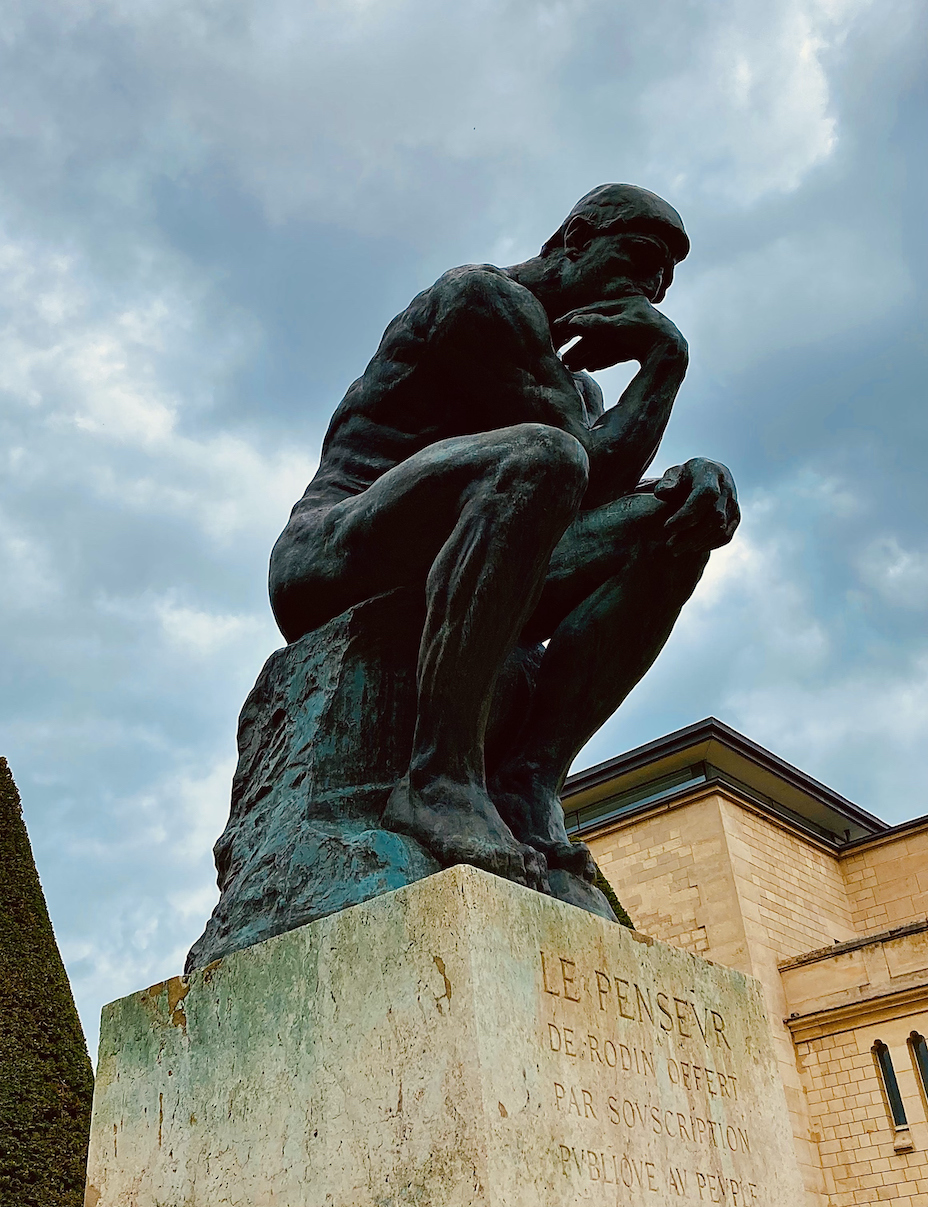
Auguste Rodin was born on November 12, 1840, in Paris, France, to a modest family. His father worked as a clerk, and young Rodin was initially educated at the École Impériale Spéciale de Dessin et de Mathématiques, known as the “Petite École.” Despite his evident talent, Rodin struggled academically and was rejected three times by the prestigious École des Beaux-Arts. Undeterred, he continued to develop his skills through self-directed study and work, becoming an apprentice to several decorative sculptors.
Early Work
Rodin’s early professional years were marked by practical work, creating decorative elements for buildings and monuments. In 1864, he produced his first major work, The Man with the Broken Nose, a rough-hewn, realistic bust that showcased his departure from the idealized forms that dominated the period. This work, although rejected by the Paris Salon, was an important precursor to Rodin’s later success.
Achievements in Sculpture Art
Claude Lorrain
Rodin’s work on Claude Lorrain was less prominent compared to his other figures, but he admired Lorrain’s ability to create atmospheric landscapes. Though Lorrain was more known for painting, Rodin was inspired by his capacity to evoke mood and emotion, an influence evident in Rodin’s later works that sought to capture the complexity of human experience.
Domingo Sarmiento
In 1880, Rodin was commissioned to create a bust of Domingo Faustino Sarmiento, an Argentine writer and intellectual who served as President of Argentina. The bust was completed in 1887 and is celebrated for its psychological depth, capturing both the intellectual vigor and the stern resolve of Sarmiento. This work further established Rodin’s reputation as a master portraitist.
Victor Hugo
Rodin’s depiction of Victor Hugo was a significant project that spanned several years. In the late 1880s, he was commissioned to create a monument to the literary giant. However, Rodin’s unconventional approach, which depicted Hugo in the nude and surrounded by allegorical figures, was met with controversy. Ultimately, the official committee rejected Rodin’s version, but the work he produced during this period, including studies and sketches, remain highly regarded.
Honoré de Balzac
Rodin’s most famous and contentious commission was for a statue of Honoré de Balzac, commissioned by the Société des Gens de Lettres in 1891. Rodin’s final design was revolutionary: instead of portraying Balzac in a naturalistic manner, he emphasized the writer’s essence, creating a massive, robed figure with exaggerated features that conveyed Balzac’s larger-than-life presence. The work was met with outrage and rejection when it was unveiled in 1898, but it is now considered a masterpiece, representing a turning point in modern sculpture.
Stormy Relationship with Camille Claudel
Camille Claudel, a talented sculptor in her own right, became Rodin’s student, muse, and lover in the early 1880s. Their relationship was intense and deeply influential for both artists, but it was also tumultuous. Claudel’s influence on Rodin’s work is evident, particularly in his more intimate and sensual pieces from this period. However, Rodin’s unwillingness to leave his longtime companion, Rose Beuret, for Claudel, and the latter’s desire for independence and recognition, led to a painful estrangement. Claudel eventually suffered from mental illness, spending the last 30 years of her life in an asylum. Their relationship remains one of the most poignant and tragic in art history.
Legacy as a Sculptor of the 20th Century
Rodin’s legacy as a sculptor is immense, as he is widely regarded as the progenitor of modern sculpture. His work marked a departure from the idealized forms of neoclassicism, embracing instead realism, expressiveness, and emotional intensity. Despite facing rejection and controversy during his lifetime, Rodin’s works, such as The Thinker, The Kiss, and The Gates of Hell, have become iconic.
Rodin’s approach to sculpture—emphasizing texture, movement, and psychological depth—paved the way for 20th-century sculptors like Constantin Brâncuși, Alberto Giacometti, and Henry Moore. His exploration of the human form and emotion continues to inspire artists today, solidifying his status as one of the most important sculptors in the history of art.
-Lê Nguyễn Thanh Phương-
